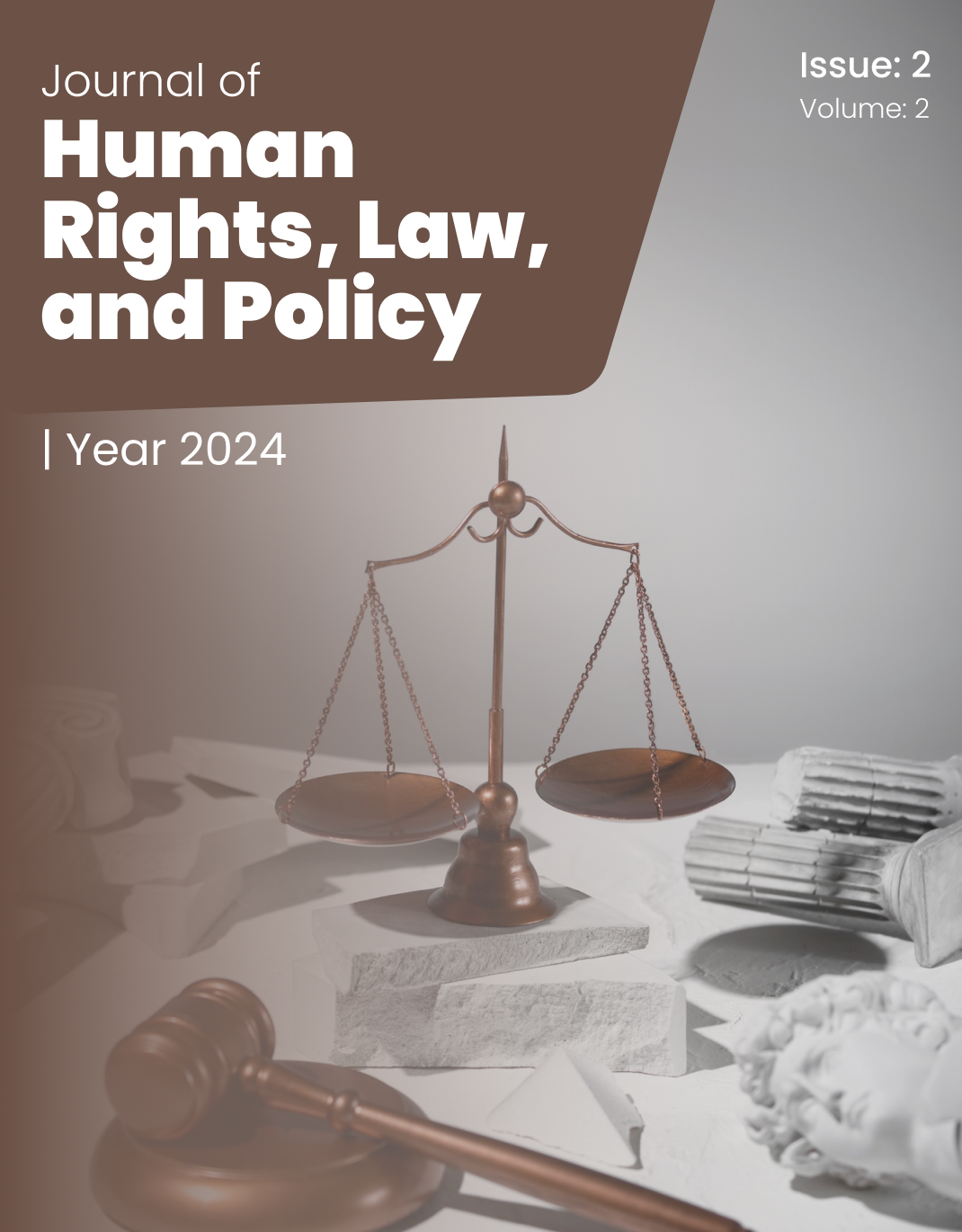Legal Pathways for Environmental Justice in Indigenous Territories
Keywords:
Biometric surveillance, human rights, privacy, qualitative study, Tehran, data security, discrimination, technological ethicsAbstract
This study aimed to explore the human rights impact of biometric surveillance through the lived experiences and perceptions of community members in Tehran. A qualitative research design was employed, utilizing semi-structured interviews with 27 participants recruited purposively from Tehran. Data collection continued until theoretical saturation was achieved. Interview transcripts were analyzed thematically using NVivo software to identify key themes related to privacy concerns, legal and ethical issues, social and community impacts, and technological factors. Four main themes emerged from the analysis. Privacy concerns dominated, with participants highlighting limited awareness of data collection, fears about data security breaches, surveillance-induced anxiety, behavioral modifications, and distrust of authorities. Legal and ethical issues revealed perceived regulatory gaps, challenges in obtaining genuine consent, and calls for accountable and ethical technology use. Socially, biometric surveillance was associated with discrimination, social exclusion, erosion of trust, low public awareness, and disproportionate effects on vulnerable groups. Technological factors, including accuracy limitations, data management practices, technological accessibility, system integration, user control deficits, and lack of transparency, further shaped participants’ perceptions. These findings underscore the multifaceted human rights challenges posed by biometric surveillance in a context with evolving technological adoption but insufficient legal safeguards. The study demonstrates that biometric surveillance significantly impacts individuals’ privacy, autonomy, and social well-being, particularly in settings lacking robust regulation and public engagement. Addressing these issues requires comprehensive legal frameworks, transparent and ethical technology deployment, enhanced public awareness, and inclusive governance models to safeguard human rights in the digital age.
Downloads
References
Boyd, D. R. (2012). The Environmental Rights Revolution: A Global Study of Constitutions, Human Rights, and the Environment. UBC Press.
Boyd, D. R. (2018). The human right to a healthy environment: Where are we now? Environmental Law Reporter, 48(8), 10436-10446.
Green, J. F., & Baldock, E. (2018). Public opinion and climate change litigation. Nature Climate Change, 8(9), 725-729. https://doi.org/10.1038/s41558-018-0265-4
Intergovernmental Panel on Climate Change (IPCC). (2022). Climate Change 2022: Impacts, Adaptation and Vulnerability. Cambridge University Press.
Kotzé, L. J. (2018). The role of courts in climate change governance. Review of European, Comparative & International Environmental Law, 27(3), 238-246. https://doi.org/10.1111/reel.12244
Kotzé, L. J., & Newell, P. (2021). Climate Litigation and the Role of Human Rights. Cambridge University Press.
Office of the High Commissioner for Human Rights (OHCHR). (2018). Understanding Human Rights and Climate Change. United Nations.
Peel, J., & Osofsky, H. M. (2015). Climate Change Litigation: Regulatory Pathways to Cleaner Energy. Cambridge University Press.
Peel, J., & Osofsky, H. M. (2020). A Rights Turn in Climate Change Litigation? Transnational Environmental Law, 9(1), 27-57. https://doi.org/10.1017/S2047102520000052
Rajamani, L. (2012). Ambition and differentiation in the 2015 Paris Agreement: Interpretative possibilities and underlying politics. International & Comparative Law Quarterly, 65(2), 493-514.
Rajamani, L. (2016). Human rights and climate change: A review of the international legal dimensions. Transnational Environmental Law, 5(1), 113-136. https://doi.org/10.1017/S2047102515000244
Savaresi, A. (2016). Climate justice litigation: Contributions and limits. Transnational Environmental Law, 5(1), 81-111. https://doi.org/10.1017/S2047102515000293
Setzer, J., & Byrnes, R. (2019). Global trends in climate change litigation: 2019 snapshot. Grantham Research Institute on Climate Change and the Environment.
Setzer, J., & Vanhala, L. (2019). Climate litigation in context: Judicial interventions in climate governance. Environmental Politics, 28(1), 1-21.
UN Human Rights Council. (2019). Report of the Special Rapporteur on the issue of human rights obligations relating to the enjoyment of a safe, clean, healthy and sustainable environment. United Nations.
Vanhala, L. (2018). Litigating Climate Change: Environmental Protection and Human Rights. Cambridge University Press.
Downloads
Published
Submitted
Revised
Accepted
Issue
Section
License

This work is licensed under a Creative Commons Attribution-NonCommercial 4.0 International License.

